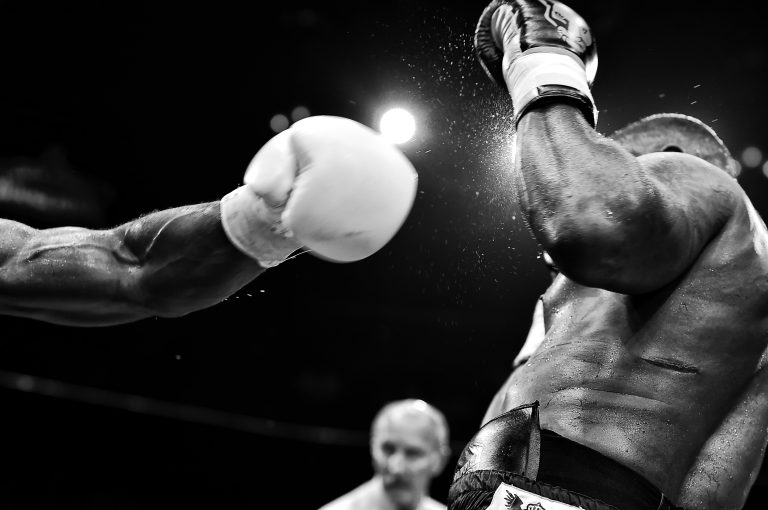All Karate Belt Colors in Order
Karate is a popular martial art that requires years of dedicated training and practice to master. A significant part of the Karate journey is the progression through the different belt colors, each representing the level of skill, knowledge, and commitment of the practitioner.
Here is a complete guide to all the Karate belt colors in order, starting from the beginner level and progressing to the advanced ranks.
White Belt
The white belt is the starting point for all Karate practitioners. It represents a beginner’s level of training and knowledge in the art of Karate, and it symbolizes a blank canvas on which the student will develop their skills.
During the white belt training, the focus is on learning the basic techniques, such as punches, kicks, blocks, and stances. The student will also learn the basic Karate principles, such as discipline, respect, perseverance, and humility.
Yellow Belt
After several months of training, the Karate student will progress to the yellow belt rank. The yellow belt signifies a basic level of proficiency in the foundational Karate techniques.
During the yellow belt training, the focus is on refining and improving the techniques learned at the white belt level. The student will also learn new techniques, such as the front snap kick and the roundhouse kick.
Orange Belt
The next level after the yellow belt is the orange belt, which represents a more advanced level of skill and knowledge in Karate.
During the orange belt training, the student will learn new techniques, such as the back fist and the jumping front kick. The focus is on developing speed, power, and precision in executing the techniques.
Green Belt
The green belt represents a significant milestone in the Karate journey. It signifies that the student has achieved a high level of proficiency in the basic Karate techniques and is ready to start learning more complex and advanced techniques.
During the green belt training, the student will learn new techniques, such as the hook kick and the spinning back kick. The focus is on developing fluidity, balance, and coordination in executing the techniques.
Blue Belt
The blue belt represents a higher level of proficiency and knowledge in Karate. It signifies that the student has developed a deeper understanding of the Karate principles and is ready to start learning more advanced Karate techniques.
During the blue belt training, the focus is on developing more complex techniques, such as the flying side kick and the double punch. The emphasis is on precision, timing, and control.
Purple Belt
The purple belt represents an intermediate level of proficiency in Karate. It signifies that the student has developed a high level of technical skill and is ready to start exploring the deeper aspects of Karate, such as the philosophies and principles of the art.
During the purple belt training, the student will learn new techniques, such as the knife-hand strike and the knee strike. The focus is on developing speed, power, and accuracy in executing the techniques.
Brown Belt
The brown belt represents an advanced level of proficiency in Karate. It signifies that the student has achieved a high level of technical mastery and is ready to start preparing for the black belt test.
During the brown belt training, the focus is on honing the techniques to near-perfection. The student will also start learning the more advanced aspects of Karate, such as sparring and self-defense techniques.
Black Belt
The black belt is the highest ranking belt in Karate. It signifies that the student has achieved a level of mastery in the art and is considered an expert Karate practitioner.
The black belt test is a rigorous and challenging process that tests the student’s physical, mental, and emotional strength. It involves demonstrating proficiency in all areas of Karate, including techniques, sparring, self-defense, and forms.
All Karate Belt Colors in Order: Frequently Asked Questions
Karate is a popular martial art that uses various belt colors to differentiate between skill levels of practitioners. These belt colors are not just decorative; they signify the amount of practice and dedication that a practitioner has put into their training. Therefore, it is crucial to understand the order of karate belt colors to keep track of your progress as a martial artist. In this blog post, we will answer some of the most frequently asked questions about all karate belt colors in order.
1. What is the Order of Karate Belt Colors?
The order of karate belt colors varies depending on the style and the school. However, most karate schools follow this belt ranking system:
– White
– Yellow
– Orange
– Green
– Blue
– Purple
– Brown
– Red
– Black
2. What Does Each Belt Color Symbolize?
Each belt color in karate symbolizes a particular skill level. Here is a brief explanation of what each belt color signifies:
– White: signifies innocence and represents a beginner level of skill.
– Yellow: signifies the first rays of sun and represents the beginning of a new day or an improvement in skills.
– Orange: represents the growing strength of the sun and the growth of skills.
– Green: represents the spring season, where growth and new opportunities emerge.
– Blue: represents the sky, which is limitless and infinite like the possibilities for further progress.
– Purple: represents the dawn, where a new level of understanding about martial arts is achieved.
– Brown: represents the ripeness of the fruit, where the practitioner is perfecting their technique.
– Red: represents danger and the need for caution, as the practitioner is approaching the final stages of their training.
– Black: represents knowledge, mastery, and proficiency in karate.
3. How Long Does it Take to Earn Each Belt Color?
The amount of time it takes to earn each belt color in karate varies depending on the school, the student’s capabilities, and their dedication to the art. Typically, it takes around three to six months to earn the yellow belt. After that, it takes around six to twelve months to progress to each subsequent belt color. However, it is worth noting that the time frame can differ significantly depending on the dojo and the individual student’s progress.
4. Can You Skip Belt Colors?
It is possible to skip belt colors in karate, but this is rare and depends on the school’s specific policy. Usually, practitioners must earn each belt color in sequential order before progressing to the next one. Skipping a belt color is typically only allowed for experienced martial artists who are transferring from another style or school, and they must pass an exam to demonstrate their knowledge and skill level.
5. Do All Karate Schools Use the Same Belt Colors?
No, not all karate schools use the same belt colors. Some schools may use a slightly different ranking system or have additional belt colors. However, most karate schools follow the traditional ranking system mentioned above. If you plan on training at a new school, be sure to ask about their ranking system to avoid any confusion or misunderstandings.
6. What Happens After You Earn the Black Belt?
Earning a black belt in karate is a significant achievement, but it is not the end of the journey. In fact, it is just the beginning. After earning a black belt, a practitioner can progress to higher degrees of the rank, such as first-degree black belt, second-degree black belt, and so on. Besides, practitioners continue to perfect their skills and knowledge, acting as role models and mentors to other students in the dojo.
All Karate Belt Colors in Order
Introduction
Karate is a martial art that uses physical techniques to defend oneself or others from an opponent’s attack. It is mainly focused on striking and kicking techniques, but also includes grappling and joint-locking techniques. One of the most rewarding aspects of karate is the belt system. The belt system is a way to recognize a student’s progress and rank. There are many belt colors in karate, and in this guide, we’ll go over all the karate belt colors in order.
The Belt System
In karate, the belt system is a way to recognize a student’s progress and rank. The belt system is used to show how much a student has learned and advanced in their techniques. A student’s belt color signifies not only their skill level but also their dedication and hard work. The belt colors used in karate are white, yellow, orange, green, blue, purple, brown, red, and black.
The Belt Colors
White Belt
The white belt is the starting point for all karate students. It represents a clean slate, a beginner’s mind, and humility. Students who wear the white belt are beginners and have not yet learned the basic techniques.
Yellow Belt
The yellow belt is the first level of colored belts and signifies the first major milestone in a student’s training. It represents the sun, which symbolizes warmth and growth. Yellow belt students have learned the basic techniques and are now moving on to more advanced techniques.
Orange Belt
The orange belt signifies a student’s increase in knowledge and power. It represents the sky during sunrise, indicating the beginning of a new day. Students who wear the orange belt have mastered the basic techniques and are now learning more advanced techniques.
Green Belt
The green belt represents growth and development. It symbolizes the leaves on trees and plants, which grow from the ground up towards the sun. Students who wear the green belt have learned many advanced techniques and are now preparing to move on to even more advanced techniques.
Blue Belt
The blue belt represents the sky, which represents endless possibility. Students who wear the blue belt have proven their abilities to execute advanced techniques with both proficiency and consistency.
Purple Belt
The purple belt signifies a student’s increase in knowledge, understanding, and power. It represents the sky during sunset, indicating the end of a day’s hard work. Students who wear the purple belt have mastered many advanced techniques and are now moving on to even more advanced techniques.
Brown Belt
The brown belt represents earth, as it symbolizes the ground a student stands upon. Students who wear the brown belt have exemplified their skills in advanced techniques and are now preparing to take the next step in their training.
Red Belt
The red belt represents the rising sun, which symbolizes the dawning of a new era. Students who wear the red belt possess an expert level of understanding, knowledge, and power. They’re also preparing themselves for the ultimate goal of obtaining their black belt.
Black Belt
The black belt represents achievement and excellence. It commonly means that a student has achieved mastery and they’re now ready to become a teacher and pass their knowledge onto future generations.
Conclusion
The karate belt system is a time-honored tradition that demonstrates the student’s progress, knowledge, and dedication to the art. The karate student’s first goal is to obtain their black belt, but the journey is about personal growth, not just achieving a goal. We hope that you found this guide to be informative and helpful. Remember, the belts are important, but it’s the journey that matters the most.
Inhaltsverzeichnis






